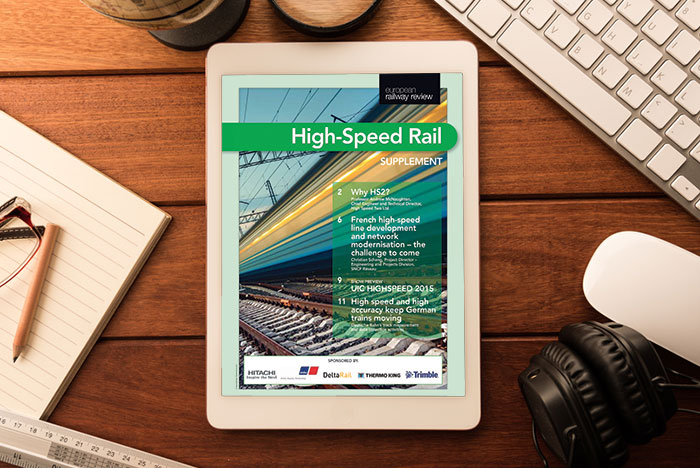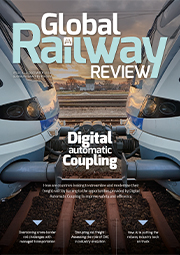High-Speed Rail supplement
Posted: 4 June 2015 | Global Railway Review | 1 comment
In our latest free-to-view High-Speed Rail Supplement, Andrew McNaughton, Chief Engineer for HS2 Ltd gives a project update as the hopeful start of construction date draws closer, plus Christian Schang from SNCF Réseau looks at the challenges to come for French high-speed line developments and network modernisation…


- Why HS2?
High Speed Two (HS2) is a completely new rail network that will connect up eight out of 10 of Britain’s biggest cities and provide the backbone for inter-city travel across the island over the next 200 years. Regular European Railway Review readers may have seen a previous article1 from Professor Andrew McNaughton – HS2’s Chief Engineer and Technical Director – explaining the work that is being done to develop a brand new passenger experience that will make HS2 the most attractive way of travelling between large population centres. Here, Andrew gives an update on how the project is progressing as the start of construction in 2017 draws closer… - French high-speed line development and network modernisation – the challenge to come
On 1 January 2015, the French government decided to merge Réseau Ferré de France (RFF) and SNCF Infra creating SNCF Réseau. The change was necessary to increase the speed and process of decision-making within the organisation. The demand on sustainable transport is continuously increasing so it is necessary to place more trains on the French network, to optimise the operational management and at the same time respond to an increase in rolling stock and infrastructure maintenance linked to the fact that more trains will be in operation. But what does the new organisation mean for high-speed lines in France? Christian Schang, Project Director in the Engineering and Projects Division of SNCF Réseau takes a look… - Show Preview: 9th World Congress on High-Speed Rail ‘UIC HIGHSPEED 2015’
The 9th World Congress on High-Speed Rail ‘UIC HIGHSPEED 2015’ is being organised by the UIC and East Japan Railway Company. It is the largest international congress and exhibition devoted to high-speed rail in the world. It gathers between 1,000 and 2,000 professionals once every few years and has been doing so since 1992. In 2015, the Congress will finally return to the birth place of high-speed rail – Japan. To be held in Tokyo, this edition will be a once-in-a-lifetime opportunity for all high-speed rail professionals including decisionmakers, authorities, railway industry, railway undertakings, infrastructure managers, research institutes, universities and others to review the past half century and to visualise the next half century of high-speed train operations worldwide. - High speed and high accuracy keep German trains moving
With more than 33,000km of track, the German rail system Deutsche Bahn (widely known as ‘DB’) handles more than 26,000 passenger trains and 5,100 freight trains every day. While DB operates the majority of trains, trains from other countries also use the system’s tracks for trans-European freight and passenger traffic. Working closely with its technical contractors, DB uses detailed, precisely defined processes to provide safe and comfortable transportation. John Stenmark, a geospatial, AEC and associated industries writer and consultant provides more details.
This High-Speed Rail supplement is restricted - login or subscribe free to access


Why subscribe? Join our growing community of thousands of industry professionals and gain access to:
- Bi-monthly issues in print and/or digital format
- Case studies, whitepapers, webinars and industry-leading content
- Breaking news and features
- Our extensive online archive of thousands of articles and years of past issues
- And it's all free!
Click here to Subscribe today Login here








GOOD REFERENCE